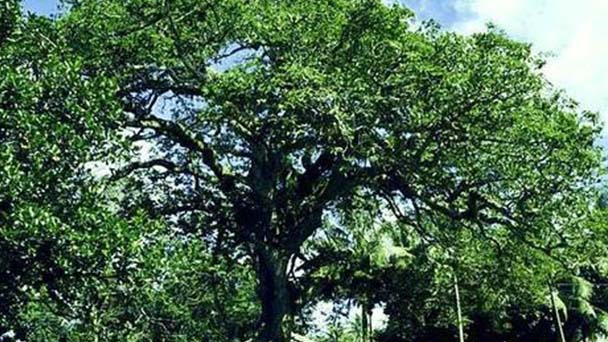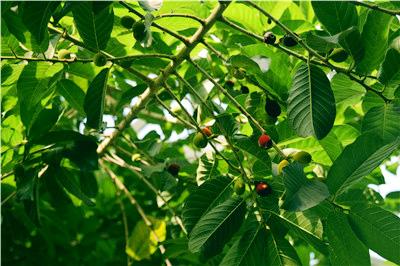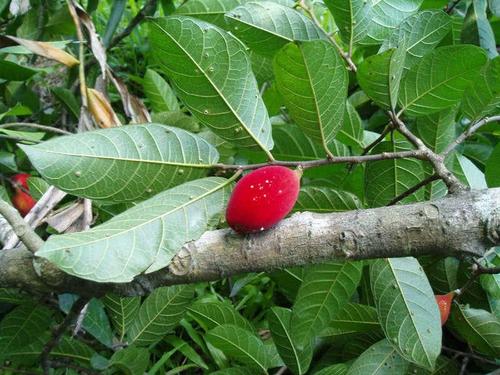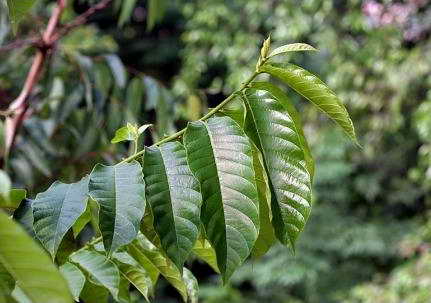Antiaris toxicaria profile
Written by Maggie
Dec 28 2020

Antiaris Toxicaria is produced from South China to southern Yunnan, mostly in low - altitude rainforests. It is also distributed from South Asia to Southeast Asia.
Antiaris toxicaria SAP is highly toxic, even death from human and animal poisoning, and can be used for hunting animals with poison arrows.
Antiaris Toxicaria picture

Morphological characteristics of Antiaris Toxicaria
Antiaris Toxicaria is a tree, 25-40 meters high, DBH 30-40 cm, occasionally with roots in large trees.Bark gray, slightly coarse; Branchlets are brown pubescent when young, crepe after dry. Leaves elliptic to ovate, petticoats thick long hirsute, da margin serrate, growth of leaves oblong, 7-19 cm long, 3-6 cm wide, apex abruptly acuminate, base rounded to shallow heart, on both sides of the asymmetry, surface dark green, thin growth kemp, the back light green, densely long hirsute, along the midrib and more dense, become dark brown after being dried, lateral veins 10 to 13 for; antiaris toxicaria petiole is short, ca. 5-8 mm long, hirsute; Stipules are lanceolate, early deciduous. Male inflorescences are tray, ca. 1.5 cm wide, surrounded by bracts of scaphoid triangle, bracts apically enrolled, covered externally; Antiaris Toxicaria hsa 4 male perianth lobes, rare 3, stamens and lobes opposite, anthers elliptic, scattered purple spots, filaments very short; Female flowers are solitary, hidden in pear-shaped receptacle, surrounded by numerous bracts, antependium, ovary 1-loculed, ovule pendulous from ventricular apex, style 2-lobed, stigma subulate, glabrous. Drupes are pear-shaped, with persistent bracts, ripe drupes, 2 cm in diam., scarlet to purplish red; Seeds are without endosperm, hard outer seed coat, cotyledon fleshy, radicle small. Flowering period is March to April, and fruiting period is May to June.
Geographical distribution of Antiaris Toxicaria
Antiaris Toxicaria is mostly distributed in equatorial tropical regions, but it is scattered in Guangdong, Guangxi, Hainan, Yunnan and other provinces. India, Vietnam, Laos, Cambodia and so on also have distribution. Antiaris Toxicaria was born in hilly or flat woods, common near villages.

Toxicity of Antiaris toxicaria
Antiaris toxicaria SAP is highly toxic. It is often mixed with strychnine as arrow poison. The SAP is poisoned when it enters the body from a wound. Symptoms include muscle relaxation, a slow heart rate, and eventually cardiac arrest, leading to death. The symptoms of poisoning in animals are similar to those in humans, and death occurs within 20 minutes to 2 hours after poisoning.
Antiaris toxicaria purposes
Terrible though it may be, Antiaris Toxicaria has a lovely side, too: the bark is extremely thick, rich in long, flexible fibers, and the minorities in Xishuangbanna, Yunnan province, often make MATS, clothes, or draperies from it. Take appropriate length a Duan Shugan, turned and tossed with a small stick even knock, when bark and wood layer separation, like snake skin peeling off the whole piece of bark, or use a knife to cut open, with the whole piece of strip, and then into the water for about a month, to knock while washing them in clean water, by removing poison, so remove colloid and dried again will get a piece of white, thick, soft fiber layer. The mattress on the bed that makes it, already comfortable and durable, sleep go up several decades also has very good flexibility; The clothes or tube skirt that make it, already gentle and keep warm again, are loved deeply by local residents. The toxic components of Antiaris toxicaria, which can accelerate heart rate and increase cardiac output, are of research and development value in medicine.

Latest Updated
- Benefits of Bugleweed - 7 Science-backed Health Benefits
- Bugleweed Dangers & Side Effects - Is It Poisonous?
- How to Plant Evergreen Trees - What You Should Know
- When to Plant Evergreens - Grow Guide for Evergreen Trees
- 12 Wonderful Evergreen Shrubs for Your Garden
- 12 Popular Evergreen Plants with Pictures for Beginners
- When And How To Prune A Lilac Bush Like a Pro
- How to Grow & Care for Lilac Vine (Hardenbergia Violacea)
- Japanese Lilac Tree (Syringa Reticulata) Care & Propagation Guide
- Shumard Oak Pros and Cons - What to Know
Popular Articles
- Winter maintenance of Antirrhinum Majus
- How to Grow Terminalia Mantaly Tree
- How to Grow and Care for Crossostephium Chinense
- How to grow Antirrhinum Majus in spring
- Peristeria Elata (Dove Orchid) Profile: Info & Care Guide
- Underwatered Snake Plant (Sansevieria Trifasciata) - Signs And How To Fix
- How to Care for Brazilian Jasmine Plant (Mandevilla Sanderi)
- How to Grow & Care for Graptopetalum Purple Delight in Summer
- Rosa Chinensis (China Rose): Plant Growing & Care Tips
- How to Care for Baby Sun Rose (Aptenia Cordifolia)